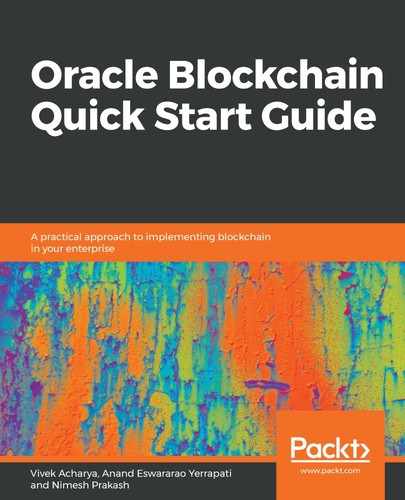With all of these fact checks about ledgers, types of systems, and knowing about the difference between DLT and blockchain, let's get into the definition and analogy of blockchain. Blockchain is a P2P network, where the ledger is distributed and transactions are posted to the ledger, but only upon consensus. Such a P2P network, along with various components, such as smart contracts, cryptography, and algorithms, help build a blockchain network that delivers trust. Blockchain allows participating parties (nodes) to establish consensus, without an intermediary, which leads to a single distributed truth (ledger). There's no reconciliation, no delays, and no intermediary, and transactions are recorded in real time over an immutable ledger forever.
Let's use an analogy for blockchain. Let's refer to blockchain as a notebook. Each page represents a block on this blockchain. You can record data of any kind, such as medical records and financial transactions, on this page, which is also known as a block, where each page (block) is chained to the previous page (block). This chain is not just a link to the previous page; it also contains information about the page in such a way that, once the data on the page is defined and added to the notebook, it cannot be changed. If it is changed, information about the page is changed. Then, the chain it holds with the other page is changed and so on. This is noticeable since the chain link is broken. Hence, the lines on each chained page are immutable.
Blockchain technology also includes smart contracts, which are intelligent programmatic contracts, also known as rules; these are defined and executed when an event of a certain type occurs on the blockchain network. It is called blockchain because the chain of blocks are a linked list of the blocks, where each block has one or many transactions. These transactions are verified and validated by the blockchain network in a given time span. The blockchain protocol's consensus algorithm, adopted for that blockchain network, defines the rules and incentive of the participating nodes. We will cover this in detail in the consensus algorithm section.
Blockchain is a chain of blocks, where each block has transactions that are recorded on a ledger (blockchain), which is distributed over all of the participating nodes in the blockchain network. This distributed ledger is the distributed double-entry ledger (as discussed previously), which records transactions for any digital asset or an asset of value. For a blockchain network, transactions are recorded on the distributed ledger from when it (the ledger) started, and they remain there immutably, forever. Hence, financial statements can be generated, traced, and validated from the start of the network. Interestingly, as the ledger is distributed and a copy of it is on all of the participating nodes, any node can verify the transaction and announce the transaction verification to reach consensus.
